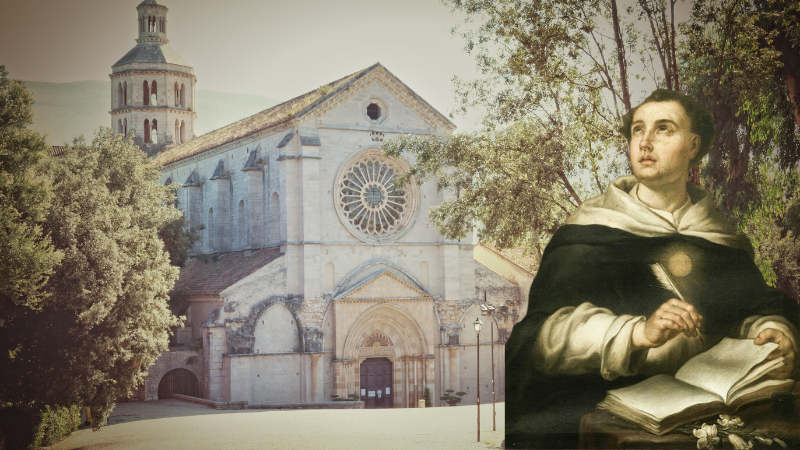
"I am for You, and for You, I have lived. The main purpose of my life has been to express God, in every word, in every feeling," proclaimed Thomas Aquinas towards the end of his earthly journey. Cardinal Marcello Semeraro, Prefect of the Dicastery for the Causes of Saints, echoed these profound words during his moving homily delivered in Fossanova, marking the commencement of the Jubilee dedicated to St. Thomas Aquinas. Pope John XXII declared him a saint through the papal bull Redemptionem misit.
Thomas Aquinas, known as "the ox of Sicily," was initially mocked for his reserved nature and wandering thoughts. However, a teacher predicted that one day his voice would resonate worldwide. This prophecy came true as Thomas Aquinas emerged as one of the Church's most significant theological figures.
Months of meticulous preparation preceded the grand festivities, which commenced with a letter from the Pope to the bishops of Sora-Cassino-Aquino-Pontecorvo, the birthplace of St. Thomas, as well as to Latina-Terracina-Sezze-Priverno, the location of Fossanova where he met his heavenly rest, and Frosinone, where the illustrious Saint's family castle stands.
The inaugural celebration took place in Fossanova, the first Gothic church in Italy. However, the commemorative events commenced on July 14 in Roccasecca, at the medieval church dedicated to St. Thomas, erected just a century after his passing. Aquino's co-cathedral, designated as a jubilee church, provides the opportunity to obtain a plenary indulgence until July 18, 2024. Notably, the co-cathedral houses a rib, close to the Saint's heart, preserved since 1963 in Toulouse. It was a cherished gift presented to the newly consecrated cathedral, symbolizing resilience and hope amidst post-war restoration efforts. In 1974, the entirety of St. Thomas' remains journeyed from Toulouse to Aquino, as the Aquinates embarked on a momentous pilgrimage to the revered Jacobins convent, commemorating the 700th anniversary of Thomas' dies Natalis.
This Jubilee, however, signifies only the initial phase of a three-part celebration. Next year, the 750th anniversary of St. Thomas Aquinas' passing will be commemorated, followed by the celebration of his 800th birth anniversary in the subsequent year.
During his homily, Cardinal Semeraro reflected upon the profound application of knowledge by the esteemed "Master," Thomas Aquinas. The Cardinal expounded on Aquinas' characteristic approach, whereby every subject of study was continually contemplated "with fervent faith."
This wisdom, marked by humility rather than intellectual exhibitionism, originated from a receptive disposition towards the "Inner Master" – the Holy Spirit, who guides hearts in embracing the doctrine of truth.
Cardinal Semeraro emphasized that "study and contemplation, therefore, are not two separate endeavors but rather one unified act, where intelligence and love converge. It is the Itinerarium in Deum for which St. Thomas stands as an emblematic example."
Indeed, Thomas Aquinas went as far as stating, "All that I have written now seems like straw to me." The Prefect of the Causes of Saints clarified that this sentiment does not denote physical or psychological exhaustion but rather aligns with the Thomist Antonin-Dalmace Sertillanges' explanation that "when the difficult becomes easily accomplished, one turns their gaze towards the impossible. Thus, for us humans, silence represents the pinnacle of condensed knowledge."
As the Jubilee unfolds, believers around the world join in honoring the indelible legacy of St. Thomas Aquinas, whose profound wisdom and unwavering faith continue to inspire generations, shaping the course of theological thought and contemplation.
This article was originally published on ACI Stampa.

Andrea Gagliarducci is an Italian journalist for Catholic News Agency and Vatican analyst for ACI Stampa. He is a contributor to the National Catholic Register.








